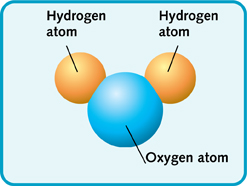Question #551f7
1 Answer
Explanation:
The idea here is that you need to use the molar mass of water to convert your sample from grams to moles, then use Avogadro's number to figure out how many molecules of water you have in the sample.
Once you know that, use water's chemical structure to calculate the number of atoms present in that many molecules of water.
So, water has a molar mass of
#1.8 color(red)(cancel(color(black)("g"))) * ("1 mole H"_2"O")/(18.015color(red)(cancel(color(black)("g")))) = "0.09992 moles H"_2"O"#
Now, one mole of a molecular substance is equivalent to
#color(blue)(|bar(ul(color(white)(a/a)"1 mole" = 6.022 * 10^(23)"molecules"color(white)(a/a)|))) -># Avogadro's number
In your case,
#0.09992 color(red)(cancel(color(black)("moles H"_2"O"))) * (6.022 * 10^(23)"molec H"_2"O")/(1color(red)(cancel(color(black)("mole H"_2"O")))) = 6.02 * 10^(22)"molec. H"_2"O"#
As its chemical formula suggests, a molecule of water is made up of
- one oxygen atom,
#1 xx "O"# - two hydrogen atoms,
#2 xx "H"#

This means that every molecule of water contains a total of
#6.02 * 10^(22)color(red)(cancel(color(black)("molec. H"_2"O"))) * "3 atoms"/(1color(red)(cancel(color(black)("molec. H"_2"O")))) = color(green)(|bar(ul(color(white)(a/a)color(black)(1.8 * 10^(23)"atoms")color(white)(a/a)|)))#
The answer is rounded to two sig figs.
Keep in mind that all of these atoms are locked into water molecules, meaning that there are no "free atoms" moving around in your sample.

